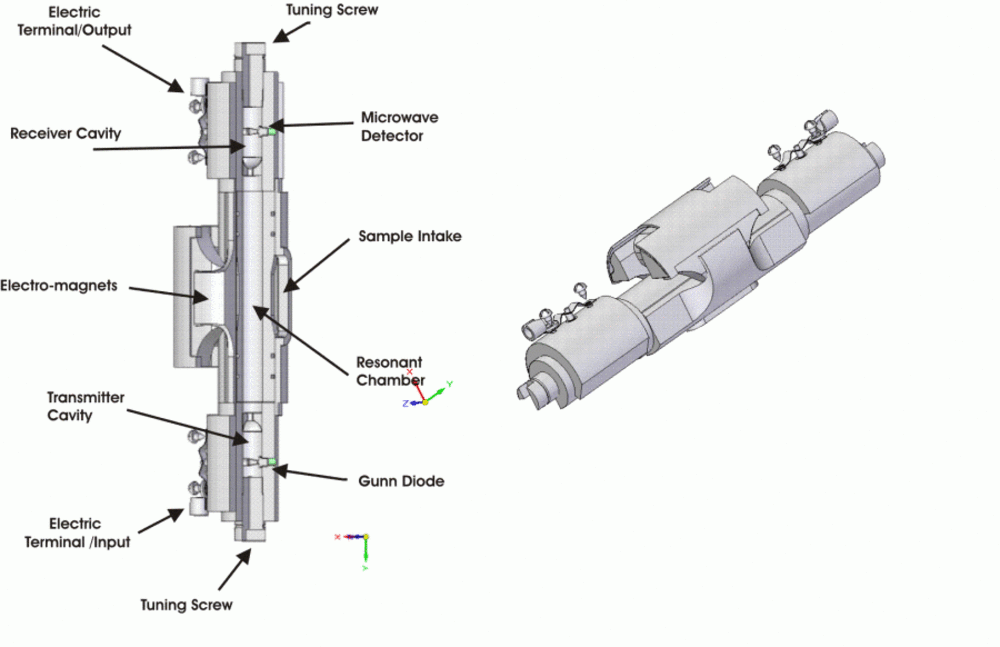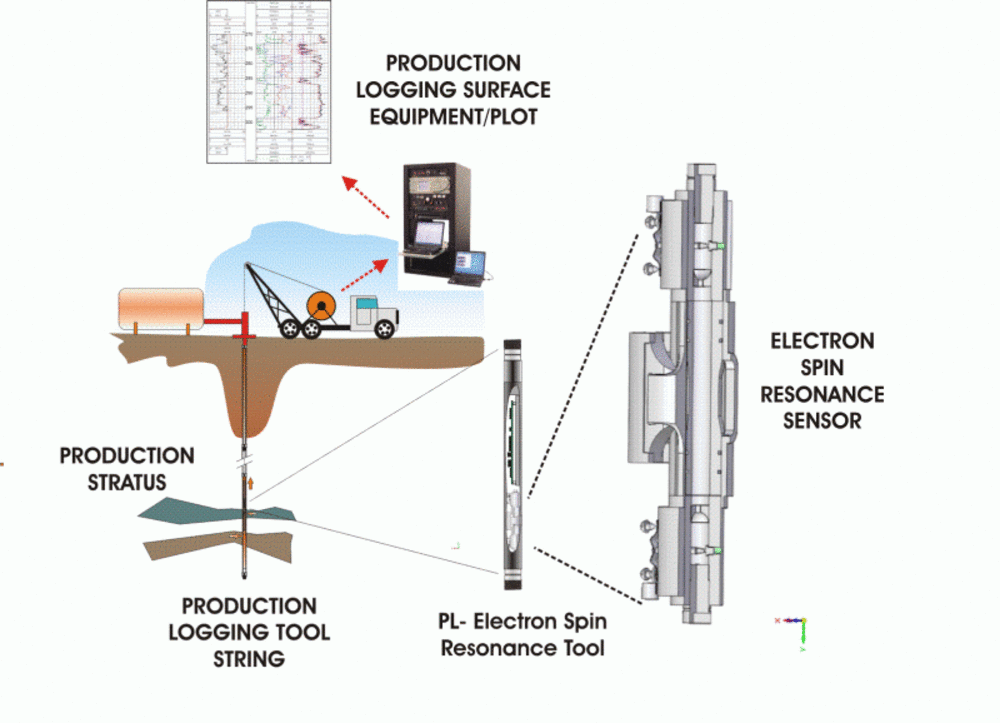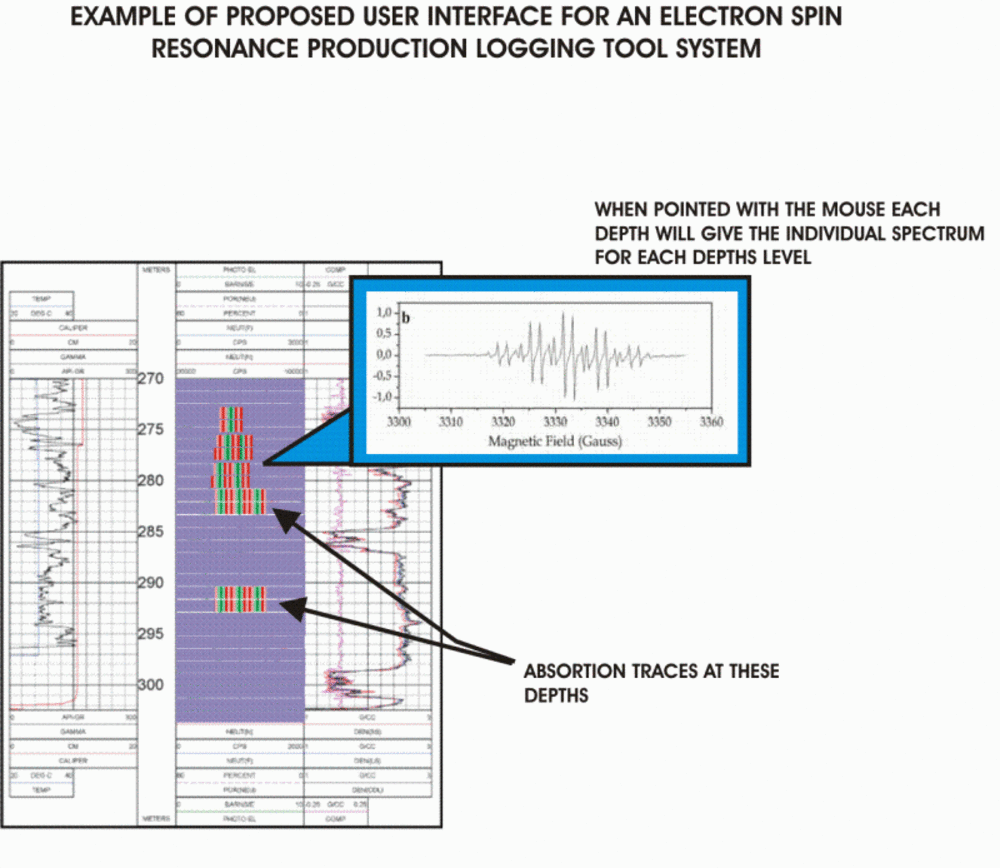This project proposes the development of a Production Logging Electron Spin Resonance Probe to operate in the range of temperatures and pressures found in the crude oil production wells able to provide the surface equipment a real time chemical analysis of the crude collected by each geological layer or depth and logging the proportion corresponding to each of the depths.
The Electron Spin Resonance chemical analysis technique measures the presence of unpaired electrons in materials by excited them through a magnetic field, the measure is made by registering the absorption of certain microwaves frequencies where the samples are located. The ESR is in use since time ago for the analysis of underground soils to determine it potential for crude oil production but this innovation not intended for exploration of new oil reserves but for what is called Production Logging. The sensor allows monitoring the quality of the crude produced layer by layer of soil. The PL-ESR probe register the content of certain unpaired electron material called –radicals- in the oil produced, and is able to determine what layers of production contain more or less of those contaminant substances.
Monitoring the production of crude in this way ensures the proportion or level of contaminants corresponds to the industrial process the crude is intended for and allows determining what depths along the well add more or less contaminants to the final mix reaching the surface and in what proportion those contaminants are added. Analyzing the crude production by ESR would be important in the countries where concessions for crude production are granted by depths or geologic layers providing records of the quality of each one the layers. Analyzing ESR data can be a complex task and some customers maybe specialized corporations which interpret geophysical data. The Production Logging ESR opens a wide field of development by the use of the ESR technology to provide corporations, governments, producers, and environmental agencies data about the amounts of contaminants in the production of crude and allows them to decide, tax, invoice or penalize the quality of the production of crude in real time.
The design does not consider the complete tool, downhole or surface readout equipment or communications, the proposed sensor or probe needs to be adapted to each one of the existent tools of the potential customers. The design requires electronics for high temperatures and the complexity of the magnetic fields and microwave resonators will require using simulation tools and software, additionally, the conditions the sensor is intended to operate will require developing calibrations processes to compensate the effects of heat and pressure in the readings. Very high temperatures and very high pressures and quite reduced physical dimensions operation constitutes the main innovations for this design.
Potential customers for this product are mainly the manufactures or designers of production logging tools, but maybe in the interest of scientific institutions for other purposes different to the crude production.
Like this entry?
-
About the Entrant
- Name:Carlos Duarte
- Type of entry:individual
- Software used for this entry:Solid Edge 19, Comsol Multiphysiscs 4.0, Corel GS 11
- Patent status:none








